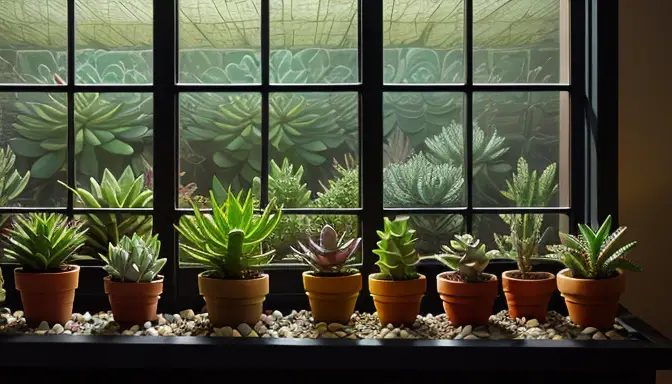
Succulents are beloved for their unique shapes and vibrant colors, making them a popular choice for indoor plants. However, these desert plants typically thrive in bright sunlight, posing a challenge for indoor environments with low light levels. But fear not! With the right care and attention, you can successfully nurture succulents in low light conditions, ensuring they remain healthy and beautiful.
When it comes to caring for succulents indoors with low light, the first step is to select the right types of succulents that can adapt to such environments. Some varieties are more tolerant of shade and can thrive with minimal sunlight exposure. By choosing these low-light-loving succulents, you set the stage for success in your indoor garden.
Optimal placement is key to providing your succulents with the light they need to thrive.
While low light conditions may limit direct sunlight, finding spots in your home that receive indirect light or brighten up during certain times of the day can make a significant difference..
Experiment with different locations to determine where your succulents will flourish best.
Watering succulents in low light requires a different approach compared to those in bright, sunny areas. These plants are more susceptible to overwatering in low light conditions, as they absorb moisture at a slower rate. It’s essential to adjust your watering schedule accordingly and allow the soil to dry out between waterings to prevent root rot and other issues.
Soil plays a crucial role in the health and growth of succulents, especially in low light environments. Using well-draining soil is essential to prevent waterlogging, which can be detrimental to these plants. A mix specifically designed for succulents, such as a blend of potting soil and perlite or sand, can provide the ideal growing medium for your indoor succulents.
Temperature and humidity levels also impact the well-being of succulents in low light. While these plants are generally resilient, they still require a stable environment to thrive. Avoid placing succulents near drafty windows or heat sources, as extreme temperature fluctuations can stress the plants. Additionally, maintaining moderate humidity levels can prevent issues like dryness or mold growth.
Loading... Seconds Left for
Miniature Orchid Terrarium Gallery!

Feeding your succulents the right nutrients is essential for their overall health and vitality. In low light conditions, these plants have lower energy requirements and may not need frequent fertilization. Choose a balanced, water-soluble fertilizer specifically formulated for succulents and follow a diluted feeding schedule to avoid nutrient imbalances or fertilizer burn.
Regular monitoring is crucial to ensure the well-being of your succulents in low light. Keep an eye out for signs of stress, such as wilting, yellowing, or pest infestations. By promptly addressing any issues that arise, you can prevent further damage and help your indoor succulents thrive in less-than-ideal lighting conditions.
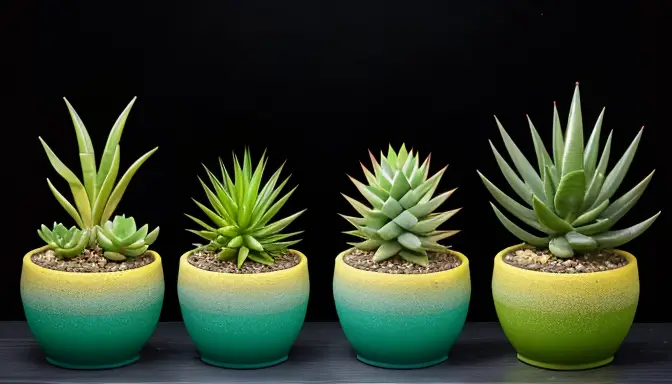
When it comes to choosing the right succulents for low light environments, it’s essential to select varieties that can thrive with minimal sunlight. Some succulents are naturally more adaptable to indoor conditions and can withstand lower light levels better than others. Here are some key factors to consider when selecting the perfect succulents for your low light space:
- Sansevieria: Also known as Snake Plant, this succulent is a great choice for low light areas due to its ability to tolerate various light conditions.
- Haworthia: These small, rosette-shaped succulents are well-suited for indoor environments with low light levels.
- Gasteria: With their unique, tongue-shaped leaves, Gasteria plants are ideal for low light settings and can add a touch of elegance to your space.
- Zamioculcas Zamiifolia: Commonly known as ZZ Plant, this succulent is extremely resilient and can thrive in low light conditions with minimal care.
By choosing these types of succulents, you can create a beautiful indoor garden even in areas with limited natural light.
Remember to consider the specific lighting conditions in your home when selecting succulents to ensure they receive the necessary light to stay healthy and vibrant..
pan id="Optimal_Placement">Optimal Placement
When it comes to placing your succulents in low light conditions, strategic placement is key to their well-being. While these plants are known for their ability to thrive in sunlight, with the right approach, they can also flourish indoors with minimal light exposure. Here are some tips for optimal placement:
- Choose areas with indirect sunlight, such as near a window with sheer curtains or in well-lit rooms that don’t receive direct sunlight.
- Rotate your succulents regularly to ensure all sides receive some light, promoting even growth and preventing stretching towards the light source.
- Consider using artificial grow lights to supplement natural light and provide the necessary light spectrum for succulent growth.
- Grouping succulents together can create a microclimate with slightly higher humidity, which can benefit these plants in low light conditions.
By ca
refully selecting the placement of your succulents and taking these factors into account, you can create an environment where these plants can thrive even in low light settings.
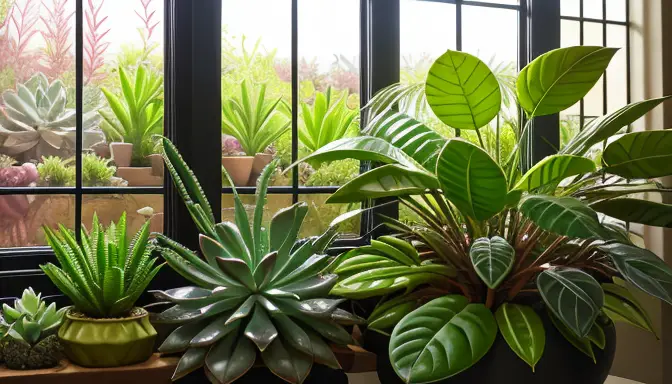
Watering Techniques
When it comes to caring for succulents indoors in low light conditions, mastering the art of watering is crucial. Succulents have unique watering needs, especially when they are not receiving as much sunlight as they would prefer. Let’s delve into some effective watering techniques to ensure your succulents thrive even in dimly lit spaces.
1. Water Sp
aringly: Succulents in low light require less frequent watering compared to those in bright, sunny areas. Overwatering can lead to root rot, so it’s essential to let the soil dry out between waterings.
2. Check Soil Moisture: Before watering your succulents, always check the moisture level of the soil. Stick your finger about an inch into the soil – if it feels dry, it’s time to water. If it’s still moist, hold off on watering to prevent waterlogged roots.
3.
Use the Soak and Dry Method: When you do water your succulents, give them a thorough soak until water drains out of the bottom of the pot..
Then, allow the soil to completely dry out before watering again. This method mimics the natural rainfall succulents would receive in their native habitats.
ear:both; margin-top:0em; margin-bottom:1em;">See also
Captivating Flowers That Start with a C
4. Avoid Spraying Leaves: While it’s common to mist houseplants, including succulents, avoid spraying water directly on the leaves of succulents in low light. This can lead to moisture buildup, making the plant more susceptible to fungal issues.
By following these watering techniques tailored to low light conditions, you can ensure your succulents remain healthy, vibrant, and thriving despite the lack of sunlight.
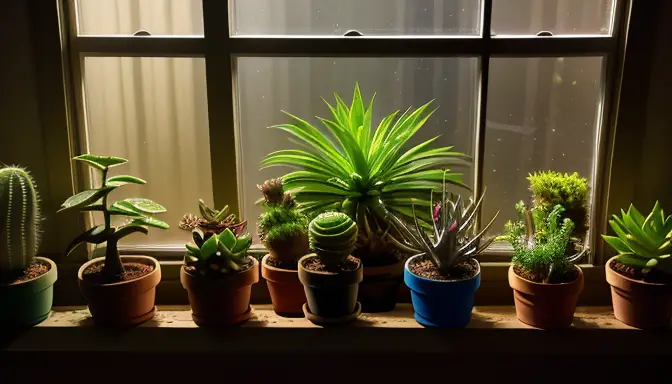
Soil_Considerations">Soil Considerations
When caring for succulents in low light conditions, soil considerations play a crucial role in ensuring their health and growth. Succulents require well-draining soil to prevent waterlogged roots, especially in environments with minimal sunlight. Here are some essential soil considerations to keep in mind:
- Well-Draining Soil: Choose a specialized succulent or cactus mix that promotes drainage. This type of soil prevents water from accumulating around the roots, reducing the risk of root rot.
- Aeration: Opt for a soil mix that provides adequate aeration to the roots. Good airflow within the soil helps prevent moisture buildup, which can be detrimental to succulents in low light.
- Mineral Additives: Consider adding mineral components like perlite or sand to the soil mix. These additives improve drainage and create a more suitable environment for succulents to thrive.
- pH Level: Check the pH level of the soil to ensure it falls within the ideal range for succulents, typically slightly acidic to neutral. Maintaining the right pH level supports nutrient absorption and overall plant health.
By selecting the right soil mix and paying attention to these soil considerations, you can provide a healthy growing medium for your indoor succulents, even in low light conditions.
![]()
ng="async" src="https://plantandseedguide.com/wp-content/uploads/2024/04/how-to-care-for-succulents-indoors-with-low-light_5.png" alt="Temperature and Humidity Control" />
Temperature and Humidity Control
When it comes to caring for succulents in low light conditions, maintaining the right temperature and humidity levels is crucial for their well-being. Succulents are sensitive to extreme temperatures and humidity, so creating a suitable environment is essential for their growth and health.
To control the temperature and humidity effectively, consider the following tips:
- ng>Temperature: Keep your indoor space at a consistent temperature range of 60-75°F (15-24°C). Avoid placing succulents near drafty windows or vents that may expose them to temperature fluctuations.
- Humidity: Succulents prefer low humidity levels, so ensure the air is not too moist. If you live in a humid climate, consider using a dehumidifier or placing a fan near your plants to improve air circulation.
- Monitor: Regularly check the temperature and humidity levels in the room where your succulents are placed. Use a thermometer and hygrometer to keep track of the conditions and make adjustments as needed.
![]()
decoding="async" src="https://plantandseedguide.com/wp-content/uploads/2024/04/how-to-care-for-succulents-indoors-with-low-light_6.png" alt="Fertilizing Practices" />
Fertilizing Practices
When it comes to fertilizing your succulents in low light conditions, it’s essential to understand their unique nutrient requirements. Succulents in low light have different needs compared to those in bright light, so choosing the right fertilizer is crucial for their health and growth.
Here are some fertilizing practices to keep your indoor succulents nourished and flourishing:
- ng>Choose a Balanced Fertilizer: Opt for a balanced liquid fertilizer specifically formulated for succulents. Look for a low-nitrogen formula to prevent overstimulation of foliage growth.
- Follow a Feeding Schedule: Feed your succulents sparingly during the growing season, typically from spring to early fall. Dilute the fertilizer to half or quarter strength to avoid burning the roots.
- Avoid Overfertilizing: Too much fertilizer can harm your succulents. Always err on the side of caution and apply fertilizers less frequently than instructed on the label.
- Monitor Plant Response: Watch how your succulents respond to fertilization. If you notice signs of overfertilization, such as leaf discoloration or wilting, flush the soil with water to remove excess nutrients.
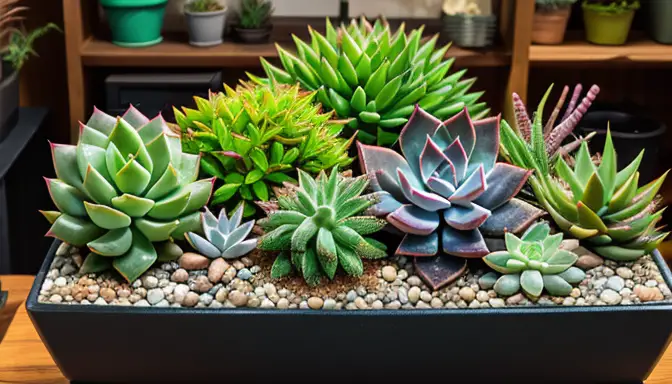
Monitoring for Signs of Stress
When caring for succulents in low light conditions, it is crucial to monitor them regularly for signs of stress. By observing your plants closely, you can address any issues promptly and ensure their well-being. Here are some key indicators to watch for:
- ng>Leaf Color Changes: Look out for any discoloration or fading of leaves, which could signal a lack of light.
- Leaf Drop: If your succulent starts dropping leaves excessively, it may be under stress and not receiving enough light.
- Stunted Growth: Slow or stunted growth can indicate that your plant is not getting sufficient light to thrive.
- Soft or Mushy Texture: Touch the leaves and stems of your succulent – if they feel soft or mushy, it might be a sign of overwatering or root rot.
By staying vigilant and noticing these signs early on, you can take the necessary steps to adjust the care routine for your succulents and ensure they remain healthy and vibrant even in low light conditions.
Frequently Asked Questions
- Can succulents survive in low light conditions indoors?
Yes, certain types of succulents can thrive in low light environments. It is essential to choose the right varieties that are more tolerant of limited sunlight.
- ong>How often should I water succulents kept in low light?
Succulents in low light require less frequent watering compared to those in bright light. It is crucial to allow the soil to dry out between waterings to prevent root rot.
- What are common signs of stress in succulents grown in low light?
Common signs of stress in succulents in low light include etiolation, stretching, and pale leaves. Regularly inspect your plants for these indicators to ensure their health.
_posts">Recent PostsHello, I'm Katie Owen! I am the voice behind "plantandseedguide," inviting you on a journey through the enchanting world of greenery. The magical beauty of nature and the fascinating realm of plants have always captivated me, leading me to this space.
Latest posts by Katie Owen
(see all)




